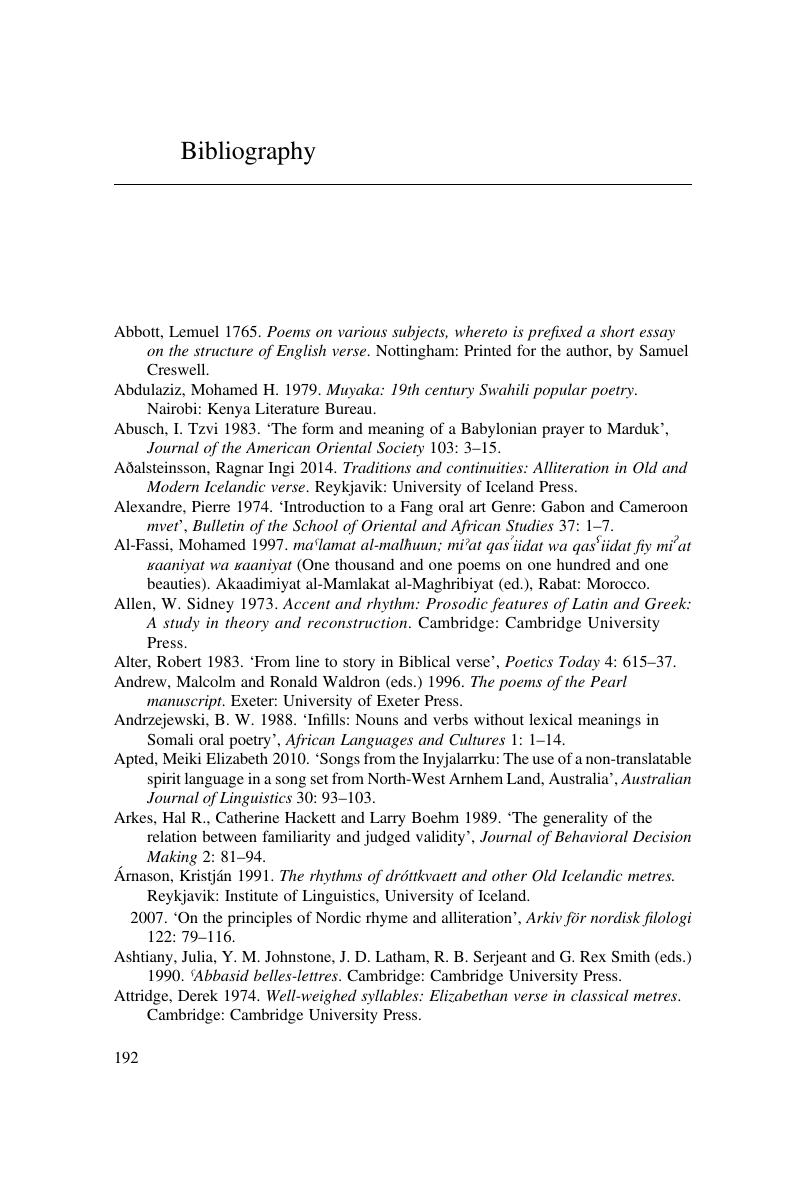Bibliography
Published online by Cambridge University Press: 05 October 2015
Summary

- Type
- Chapter
- Information
- What is Poetry?Language and Memory in the Poems of the World, pp. 192 - 213Publisher: Cambridge University PressPrint publication year: 2015



